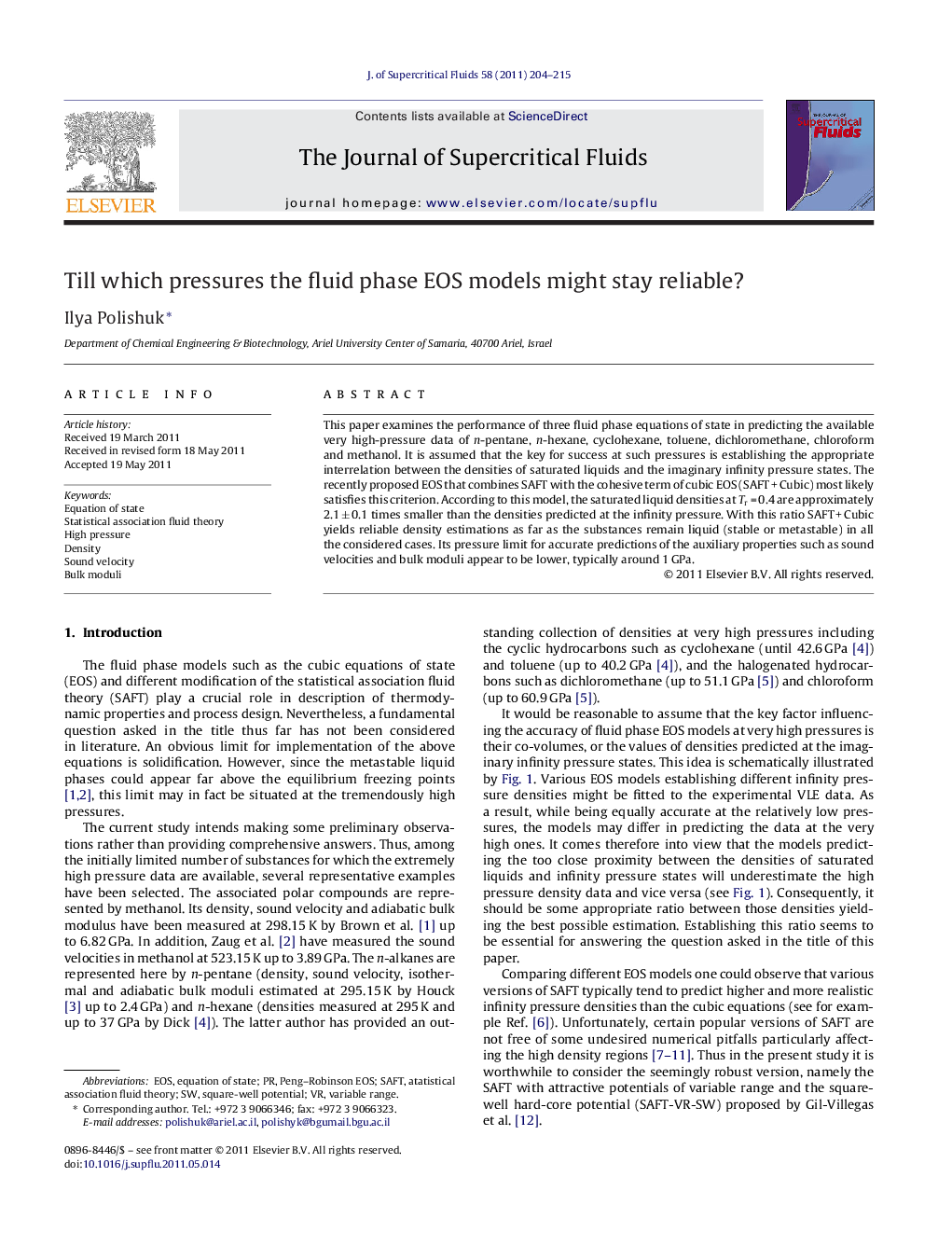| Article ID | Journal | Published Year | Pages | File Type |
|---|---|---|---|---|
| 231167 | The Journal of Supercritical Fluids | 2011 | 12 Pages |
This paper examines the performance of three fluid phase equations of state in predicting the available very high-pressure data of n-pentane, n-hexane, cyclohexane, toluene, dichloromethane, chloroform and methanol. It is assumed that the key for success at such pressures is establishing the appropriate interrelation between the densities of saturated liquids and the imaginary infinity pressure states. The recently proposed EOS that combines SAFT with the cohesive term of cubic EOS (SAFT + Cubic) most likely satisfies this criterion. According to this model, the saturated liquid densities at Tr = 0.4 are approximately 2.1 ± 0.1 times smaller than the densities predicted at the infinity pressure. With this ratio SAFT + Cubic yields reliable density estimations as far as the substances remain liquid (stable or metastable) in all the considered cases. Its pressure limit for accurate predictions of the auxiliary properties such as sound velocities and bulk moduli appear to be lower, typically around 1 GPa.
Graphical abstractFigure optionsDownload full-size imageDownload as PowerPoint slideHighlights► It is assumed that the key for success in predicting data at very high pressures is establishing the appropriate interrelation between the densities of saturated liquids and the imaginary infinity pressure states. ► The saturated liquid densities at Tr = 0.4 should most probably be approximately 2.1 ± 0.1 times smaller than the densities predicted at the infinity pressure. ► A model satisfying this criteria may yield reliable density estimations as far as the substances remain liquid (stable or metastable).
